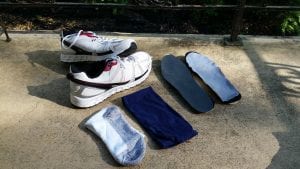 Rebecca White, Benjami Copeland, Kathleen Neighbors, Spencer Herndon
Rebecca White, Benjami Copeland, Kathleen Neighbors, Spencer Herndon
With the aging population and poor dietary and exercise habits within the United States, people experience stroke at a more prevalent rate. A segment of stroke survivors experience hemiparesis, which is weakness or loss of motor control on one side of the body. This creates a paretic, or weakened, leg and disrupts an individual’s gait, affecting their ability to perform daily living activities. One way this disruption is manifested is in a decrease of propulsive force in the paretic leg compared to the non-paretic leg. Clinical therapy is limited by cost, time, and patient availability. Thus, there exists a need for an inconspicuous, implicit, take home method to help hemiparetic stroke survivors to improve their paretic propulsive force while they are going about their daily walking activity. Our design approach is a shoe-sock interface that controls the amount of force generated by each leg by utilizing the relationship between friction and propulsive force. The design implements a pair of discrete shoe inserts interfacing with a prescribed sock to generate a differential force between each leg. A specialized treadmill equipped with force plates was used to measure the propulsive forces generated by this design. The data, analyzed in MATLAB, showed statistically significant increases in the difference of force between each leg between the differential force sock-shoe interface compared to the control, normal interface condition. These results show that the shoe-sock interaction design is a promising at-home therapy device for the rehabilitation of individuals with hemiparesis.